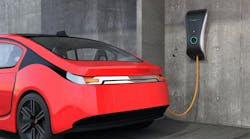The transition from fluorescent lighting to more efficient and flexible LED lighting is progressing rapidly in the commercial market and along with it the market for lighting controls has expanded. Both the variety of control systems that are available and the sheer number of systems that are being installed are growing quickly. Building energy codes largely drive the adoption of more basic lighting controls such as occupancy sensors and photosensors. Yet, those codes also create the opportunity for a lighting project to upgrade to a more comprehensive control system for a modest price increase. For these reasons, research firm Navigant in its latest study estimates that global networked lighting controls revenue will grow from $2.2 billion in 2015 to $4.8 billion in 2024.
With this growth, the market is seeing innovation in all directions, Navigant said in a release announcing the study.
To meet the growing demand for lighting control systems, different types of vendors have moved into the lighting controls market. Leading the innovative side of this move are pure-play startup companies, which are largely responsible for the proliferation of creative ways to visualize lighting usage and devise new strategies to manage lighting energy consumption. The large, traditional lighting companies have begun offering a range of lighting control products, as well. Finally, the established building controls companies have also been expanding their capabilities to include lighting controls along with other buildingwide control systems.
This Navigant Research report analyzes the worldwide market for lighting controls, covering sensors, relays, switches, ballasts, drivers, network control gear, network services, and communications technologies, with a specific focus on networked lighting controls. Global market forecasts for unit shipments and revenue, segmented by equipment type, building type, construction type, technology, and region, extend through 2024. The report details the market drivers for lighting controls technologies, including building codes, hardware costs, and consumer expectations, as well as barriers to adoption, and provides profiles of select industry players.
Here’s the Navigant release with info on how to obtain a copy of the study: Intelligent Lighting Controls for Commercial Buildings








